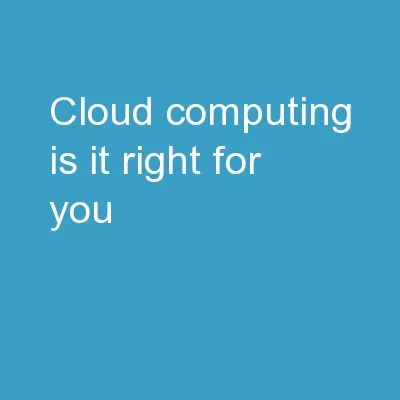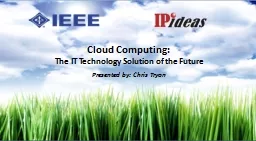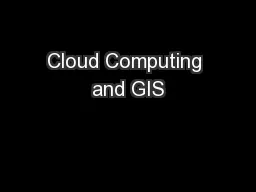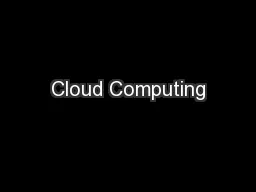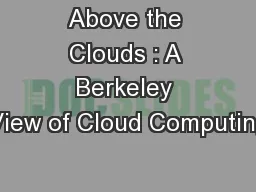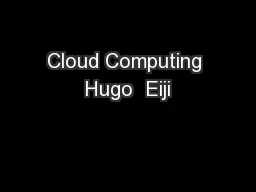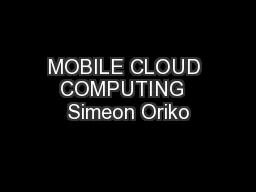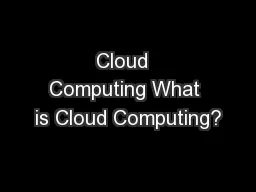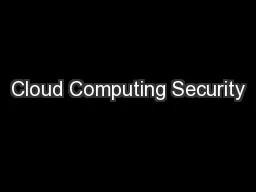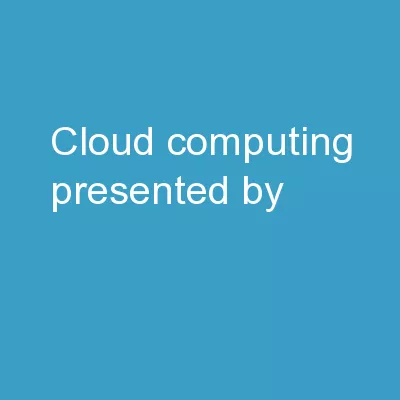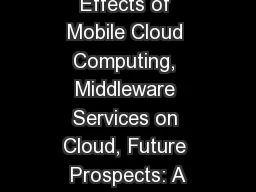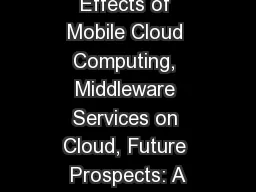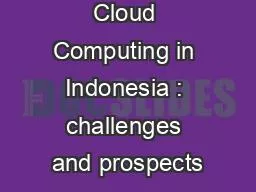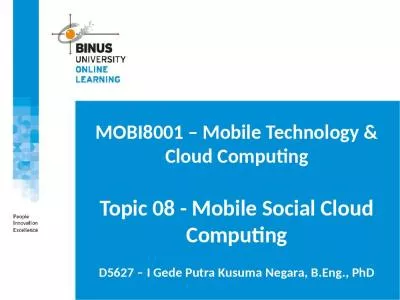PPT-Cloud Computing Is it right for you?
Author : sherrill-nordquist | Published Date : 2018-11-18
John Craddock johncraxtseminarscouk John Craddock Created by John Craddock XTSeminars Ltd brings you world class IT seminars written and delivered by experts As
Presentation Embed Code
Download Presentation
Download Presentation The PPT/PDF document "Cloud Computing Is it right for you?" is the property of its rightful owner. Permission is granted to download and print the materials on this website for personal, non-commercial use only, and to display it on your personal computer provided you do not modify the materials and that you retain all copyright notices contained in the materials. By downloading content from our website, you accept the terms of this agreement.
Cloud Computing Is it right for you?: Transcript
Download Rules Of Document
"Cloud Computing Is it right for you?"The content belongs to its owner. You may download and print it for personal use, without modification, and keep all copyright notices. By downloading, you agree to these terms.
Related Documents

